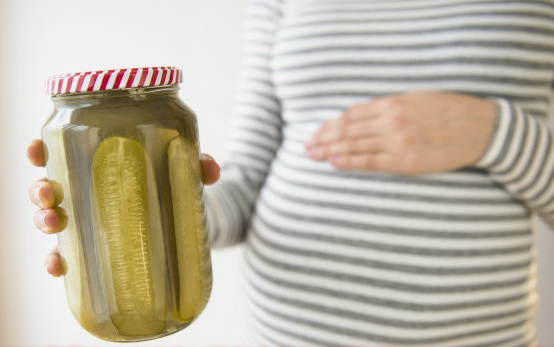(单词翻译:单击)
5.The Detonation Tenderizer: A Literal Flavor Explosion
5.利用爆炸冲击改变肉质
Over the years, the U.S. Patent and Trademark Office has rounded up herds of ideas for tenderizing meat, from the familiar (spiky hammers, enzymatic tenderizers) to the outlandish (using pressure pulses or acoustic waves on submerged meat). But none packed quite the punch of U.S. Patent No. 3,492,688 A, understatedly titled "Apparatus for tenderizing food." Submitted by Charles S. Godfrey in 1966, the method called for breaking up tough fibers in subprime cuts via high explosives. Bomb and beef would bathe in the same water-filled tank to maximize the effect
多年来,美国专利及商标局搜集了各种使肉质鲜嫩的技术,从传统手艺(敲击,酶嫩化剂)到创新技术(使用压力脉冲或声波让肉均匀变化)应有尽有。但却没有技术能比得上序号为3492688 A的美国专利,它被低调地命名为“柔化食品设备”。1966年,查尔斯·戈弗雷提出申请这项专利,宣传通过烈性炸药打破动物的硬质纤维肉,并把炸药和牛肉放在同一个水罐中来达到最佳效果。

Godfrey thought that the high explosive approach would blow past the shortcomings of other pressure techniques by creating a much more dramatic and sudden pressure change at the shock front. He might have been onto something, since several other patents have since built on the idea, and at least one company has put it into practice. A pioneer of early nuclear weapons research, Godfrey was also a seasoned veteran of explosive technologies. In addition to helping design the diminutive test nukes set off on Eniwetok Atoll in the 1950s, he held patents in high velocity explosives and shaped explosives and the use of explosives in rock fracturing and excavation.
戈佛雷认为,高爆方法能在激振前沿创造出更显著的突变,从而弥补过去其他压力技术的缺点。也许他这项发明真的很厉害,因为他的设计理念已经在其他几项专利中得到体现,而且至少有一家公司已经把这项技术付诸实践。作为早期核武器研究的先驱,戈佛雷还是一名经验丰富的爆破技术老兵。20世纪50年代,他在埃尼威托克的环礁协助设计微型核武器爆破试验,此外他还持有高速炸药、变形炸药、爆破和开挖岩石炸药的专利。
4.Pica: So Many Words, So Many Food Fixations
4.异食癖:吃任何东西,什么都可以吃

We all have our share of unusual cravings, but few are as startling as the wide range of materials consumed by people with the disorder pica, the repeated eating of largely non-nutritive substances like wood, soil or paint chips. The word pica derives from the medieval Latin name for magpie, a bird reputed to eat just about anything
任何人都可能有一些奇特的欲望,但是却很少有像那些异食癖患者一样有着令人咋舌的欲望,他们吃各种东西,比如木头、泥土或者油漆木片这种没有营养的物质。异食癖这个单词来源于中世纪的拉丁语,意思是喜鹊,因为喜鹊普遍被认为是吃任何东西的鸟类。
Thanks to Greek and Latin, there's a name for every neurosis, and the many flavors of pica are no different. Xylophagia describes the consumption of paper, pencils, tree bark or other woody items. Chewing and eating glass is the habit of those with hyalophagia, and of course there's also urophagia (urine), coprophagia (feces), geophagia(dirt), autosarcophagy (eating bits of oneself) and, yes, anthropophagy (human flesh). People with trichophagia chew and/or swallow their own hair, which can result in a dangerous trichobezoar (hairball) that blocks the intestines and requires surgery. In 2007, surgeons removed a 10-pound (4.5-kilogram) trichobezoar that had completely filled the stomach of an 18-year-old woman. Such compulsions are frequently associated with a psychological condition or learning disorder. The prevalence of pica varies from 4 to 26 percent among the institutionalized, and the condition can co-occur with Kleine-Levin syndrome, mental retardation and schizophrenia. But it also can crop up among otherwise healthy children and in men and women of all ages and cultures, sometimes in response to a dietary deficiency.
借助拉丁语和希腊语,使得每一种神经病症都有学名,不过异食癖也有许多不同的类型。食木癖患者是来形容那些喜欢吃纸,铅笔,树皮或者是其他木质品的人,而习惯吃玻璃的人则被称为食玻璃癖患者,此外还有喝尿癖、食粪癖、食土癖,食己癖,自然也有食人癖(喜欢吃人肉)患者。而有食毛癖的人则喜欢咀嚼或者吞咽自己的毛发,这样会导致肠子被危险的毛团堵塞,需要动手术来疏通。2007年,曾有一个18岁的食毛癖女性,通过手术移除了塞满其腹腔的近10英镑重(4.5千克)的毛发团。不过这些强迫症主要和心理状况以及学习障碍有关。在那些缺乏自理能力的人身上,这种异食癖的发病率大约在4%到26%之间,这种病症还可能引起克莱恩莱文综合征、智力缺陷以及精神分裂症等并发症。但是健康的孩子,不同文化背景不同年龄层次的成人也会突发异食癖,有时只是因为他们的饮食不均衡导致缺乏营养物质。
3.The Pickle-ice-cream-flavored Mystery of Pregnancy Cravings
3.咸菜冰激凌味儿的料理——揭秘孕妇的奇葩口味

The scene depicting a pregnant woman dispatching her mate for pickles and ice cream in the wee small hours is so trite as to qualify as a stereotype, but it's rooted in a familiar phenomenon. Being pregnant can cause unusual cravings, drive a desire to double down on old habits or bring on new and strong aversions. Yet researchers still don't fully understand the biological and behavioral mechanisms behind these hankerings.
在生活中,我们总是能看到这样的情景——一个孕妇催着丈夫去买咸菜和冰激凌,让他快去快回。这个情景着实老套,也再平常不过。怀孕能让你的口味变得奇特,原来的饮食习惯会加倍凸显,还可能发生从来没有过的激烈反应。。然而,研究者们仍然不了解这些奇特口味背后的生物学和行为学原理。
A few patterns have emerged over the years. For example, an expecting mother's cravings tend to fall within culturally available fare; in Tanzania, women crave (in order) meat, mangoes, yogurt, oranges, plantains and soft drinks, whereas American women crave dairy and sweet foods. Connections have also emerged between pregnancy-linked hormone shifts and an increase in neuropeptide Y, a hypothalamus-born chemical messenger associated with appetite in general. So what inspires specific cravings? It's possible that some yens are meant to counter the odd smells, strange tastes, phantom odors and food aversions that can crop up during pregnancy. But this is only one possibility and requires further study.
近年来出现了很多不同的孕妇饮食偏好模式。例如,在一些饮食文化中,准妈妈们的口味会变淡;在坦桑尼亚,孕妇变得爱吃肉、芒果、酸奶酪、橙子、大蕉等食物以及爱喝软饮料;而在美国,孕妇的日常饮食则偏重奶制品和甜品。研究者还发现,孕激素的变化能导致神经肽Y增多,而神经肽Y是下丘脑产生的一种与食欲有关的信号激素。那么到底是什么导致了这种奇特的口味呢?可能是为了抑制怀孕期间闻到的、吃到的或只是假想的怪味,以及突发的妊娠反应。但是这只是一种可能性,具体情况如何,还需要进一步探究。
2.The Nose Knows Numminess
2.鼻子熟识美味

We all recognize the role of smell in whetting our appetites, conjuring emotions and stirring memories, yet those little buds on our tongues still get most of the credit for detecting taste. According to researchers in the field of neurogastronomy, however, we have it backward.
我们都知道嗅觉能引起我们的食欲、激发我们的情绪、勾起我们的回忆,但我们不知道的是察辨味道主要还是归功于我们舌尖上小小的味蕾。在神经美食学领域的研究者看来,我们早已落后。
Taste buds evolved to detect basic notes of sweet, salty, sour, bitter and umami (the savory flavor of mushroom or soy sauce) to help us distinguish energy-rich carbohydrates, find essential salts, test foods for ripeness, detect toxins and identify proteins . But it's the sensation of smell -- specifically, the retronasal smells that waft into the nasal cavity from the mouth as we savor food -- that forms the fuller picture of flavor in our brains. Smell is so nuanced that scientists have compared it to sight for the way it forms "pictures" of millions of flavor combinations and determines resemblances among them. Research has further linked the sense of smell to psychological well-being and neuroplasticity. Molecular gastronomists, who try to understand the physics and chemistry of food for artistic and culinary effects, make careful use of odorants and aromatics in their creations, but the interactions between saliva and food make isolating the key smell-ecular elements difficult. Oh, well. There's always marketing.
味蕾进化是为了分辨基本的甜、咸、酸、苦及鲜(蘑菇或酱油的咸味香精),以此来帮助我们区分高热量的碳水化合物、发现人体所需盐分、检验食物是否成熟、探测毒素以及识别蛋白质。但嗅觉,尤其是余味,在我们品尝食物时从嘴里飘进鼻腔,如此便在我们的大脑中形成一幅更完整的图片。嗅觉是如此微妙,科学家们将它与视觉做对比,来找出数百万种味道混合成“图片”的形成方式以及其相似性的判定方式。研究进一步认为嗅觉与心理健康和神经可塑性相关联。而所谓的分子美食家,就是那些为了艺术效果和食用效果去研究食物的物理、化学特性并在食物的再创造过程中悉心运用气味和芳香剂的人。但是唾液和食物之间的相互作用加大了隔离关键性“味道因子”的难度。噢!对了,市场总是以此为促销噱头。
1.A Food by Any Other Name
1.食物的其他名字

Foods are known by many names. Some refer to subtle distinctions, as coriander and cilantro refer to the seeds and the vegetative pieces, respectively, of the Coriandrum sativum plant. Others might reveal cases of mistaken identity, as when many Americans each Thanksgiving mislabel sweet potatoes as yams, when in fact they are two separate plants.
食物通常有许多名字。有些是有着细微差别的,比如胡荽叶和芫荽叶分别指芫荽植物的种子和叶子。但也有一些认错食物名称的事例,比如每到感恩节,大多数美国人会错把番薯称为薯蓣,其实它们是两种截然不同的植物。
Then there are those foods that assume new monikers for marketing purposes. Canola (a portmanteau of "Canada " and "ola" for oil) is actually a specially bred rapeseed oil rebranded to avoid negative associations with the word "rape" (rape, or Brassica napus, is a plant in the mustard family) and possibly to distance it from earlier versions of rapeseed oil, which were toxic to humans . Kiwifruit is not from New Zealand at all -- it's a Chinese gooseberry rebranded by exporters to avoid negative associations in Cold War American markets. It's also not a gooseberry, so it's just as well that they changed its label.The Patagonian toothfish (Dissostichus eleginoides) was renamed "Chilean sea bass" to better whet customer appetites and was so successful that it now faces overfishing, despite not being a sea bass at all. For similar reasons, restaurant customers now know the "slimehead" (Hoplostethus atlanticus) as the far more appealing "orange roughy". A rose is a rose is a rose, but cheap hake sells better as scarlet snapper.
出于营销目的,还有一些食物采用了新名字。如芥花油(是从 “Canada Oil Low Acid” 四个字的首字母组合而成,意为 “低酸加拿大油”)实际上是一种经特殊培养的菜籽油,但或许是为了避免”rape”(芸苔或甘蓝型油菜,是一种十字花科植物)这个词汇带来消极影响,也或是为了区分对人体有毒害作用的早期菜籽油,它就被重新命名了。猕猴桃并不是来自新西兰——它其实是中国鹅莓,是出口商为避免冷战期间美国市场带来的消极影响而重新起的名字。它也不是醋栗,所以只是他们换了名称而已。巴塔哥尼亚齿鱼(小鳞犬牙南极鱼)被重命名为智利海鲈鱼是为了更好地刺激消费者的购买欲,而且获得了巨大的成功。尽管它不是鲈鱼,但它现在也面临过度捕捞的局面。基于类似的原因,餐厅顾客现在都知道听起来更有吸引力的“罗非鱼”其实就是“燧鲷”(大西洋胸棘鲷)。一朵玫瑰就像一朵玫瑰是一朵玫瑰一样,但廉价的鳕鱼就是要比大红鲷鱼卖得好。
翻译:泯泯 审校:Freya然 来源:前十网


